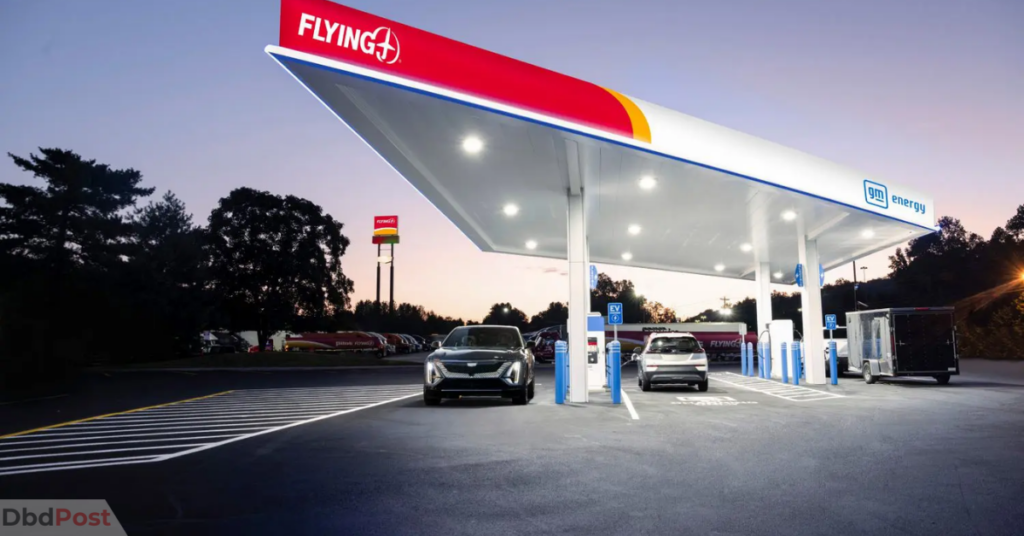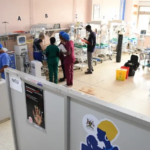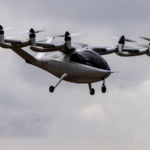General Motors, EVgo Inc., and Pilot Company are changing how America travels. Together, they’re reshaping the EV experience from the ground up. Their fast-charging network is now live across more than 25 states.
So far, they’ve opened over 130 charging locations. These stations offer fast, reliable power for electric vehicles. And this is only the beginning.
They plan to roll out up to 2,000 fast-charging stalls in 500 locations nationwide. This is one of the most significant public EV charging expansions to date.
Each location is at a Pilot or Flying J travel center. These centers already serve millions of drivers, and now they also serve electric vehicles.
That’s no accident. The companies chose these locations for their accessibility. They sit along significant highways and critical travel corridors.
Long road trips in an EV used to feel uncertain. Drivers had to plan routes carefully, often detouring to charge. That’s changing—fast.
Now, EV drivers can stay on the road without fear. Charging is convenient, easy, and often located where drivers already stop. It’s travel, uninterrupted.
What makes this network special isn’t just the number of chargers. It’s the experience behind them. Each station offers more than just power.
Travelers can rest in clean, well-lit lounges. They can grab food, use modern restrooms, or check emails using free Wi-Fi. It turns a pit stop into a pleasant break.
That’s a big deal. Many public charging stations sit in remote or poorly serviced locations. This network flips that script entirely.
Moreover, it serves all kinds of drivers. From families in electric SUVs to long-haul truckers driving electric rigs, everyone gets value. Inclusivity is part of the design.
And the technology? It’s top-tier. These chargers can deliver up to 350 kilowatts of power.
With that kind of output, many EVs can charge in just 15 minutes. That’s faster than it takes to order and finish a coffee. Efficiency has become part of the norm.
Even better, many stations include Plug-and-Charge capabilities. Drivers with compatible EVs plug in and power up: no apps, cards, or hassle.
This ease of use removes barriers, simplifies the switch to electric, and encourages more drivers to leap.
Beyond convenience, the project has more significant implications. It supports national goals for reducing emissions. More chargers mean more EVs—and fewer gas-powered cars on the road.
Transportation remains one of the most significant sources of pollution. Electric vehicles help reduce that impact. But they need a strong infrastructure to succeed.
That’s where this partnership comes in. GM, EVgo, and Pilot are doing what few others have: building at scale and fast. Their work supports government plans and accelerates climate progress.
At the same time, the effort closes gaps in access. For the first time, many rural or suburban areas now have fast charging, which expands freedom and confidence for EV drivers.
No one wants to feel limited by their vehicle. Range anxiety has long plagued EV adoption. This network helps end that worry.
Now, people can travel freely, take road trips without hesitation, and rely on a working system.
This project also shows how private companies can lead. While governments encourage EV growth, business investment is key. Partnerships like this one are vital to real-world results.
And this one is delivering. Already, EV drivers report smoother trips and shorter wait times, and the feedback has been overwhelmingly positive.
Social media posts show drivers celebrating their fast, easy charging experiences. Online forums highlight the difference this network makes, and word is spreading quickly.
As more people see the benefits, demand rises. With the growth of the EV market comes the need for even more chargers.
This network anticipates that growth. It doesn’t just meet current demand—it prepares for what’s next. That forward thinking gives it an edge.
Manufacturers also benefit. As automakers launch new EVs, they can point to actual infrastructure. That builds consumer trust and fuels sales.
Many buyers hesitate because of charging concerns. This project addresses those concerns head-on. It removes a significant obstacle to EV ownership.
Meanwhile, Pilot and Flying J benefit, too. These new amenities attract more travelers and turn traditional stops into future-ready hubs.
Every station becomes a place to rest, refuel, and recharge literally and figuratively. It’s a full-service model that meets modern needs; travelers notice the difference.
And it’s working. Drivers aren’t just charging—they’re choosing where to charge. They’re picking places with better service, food, and restrooms.
That changes behavior. It rewards companies that invest in quality. It raises expectations across the industry.
The investment also reaches far beyond highways. Local communities benefit, too. These projects create jobs, attract visitors, and support nearby businesses.
The momentum continues. More sites are under construction, and more regions will soon be part of the network.
That includes remote areas often left out of infrastructure improvements. The partnership’s reach helps ensure equity. Every driver deserves access—no matter where they live.
The strategy behind the rollout is smart. By targeting significant corridors first, the companies maximize impact. Each station links key destinations and fills critical gaps.
In turn, they’re forming a web of connectivity. Drivers can now move between states without thinking twice. It’s freedom powered by design.
Looking ahead, technology will continue to evolve. Charging speeds will increase, and hardware and software will continue to improve.
But the foundation matters most. Building a dependable network today makes tomorrow’s improvements more meaningful. It’s about getting it right now.
And they are. It isn’t a flashy press release with empty promises. It’s a real, functioning system that drivers are using right now.
More importantly, it works. Drivers trust it. They’re planning trips around it.
That’s a significant shift. For years, EV road travel felt uncertain. This partnership removes that uncertainty mile by mile.
In short, this isn’t just a project. It’s a transformation, a blueprint for electrifying America’s highways.
It shows what’s possible when companies collaborate for the greater good. It proves that wise investment can drive lasting change.
And it makes one thing clear: the future of EVs is already here. You can see it at the next off-ramp. You can charge up and keep going.
Drivers no longer have to choose between comfort and sustainability. They can have both. And they can have it now.
- 107shares
- Facebook Messenger
About the author
Paul Dement is a seasoned journalist specializing in breaking news, national and international stories, reviews, and opinion pieces. With over a decade of experience, he is committed to delivering accurate, up-to-date coverage that helps people stay informed and engaged. Paul earned his Journalism degree from the University of Oklahoma and remains dedicated to covering the stories that truly matter to the global community.





